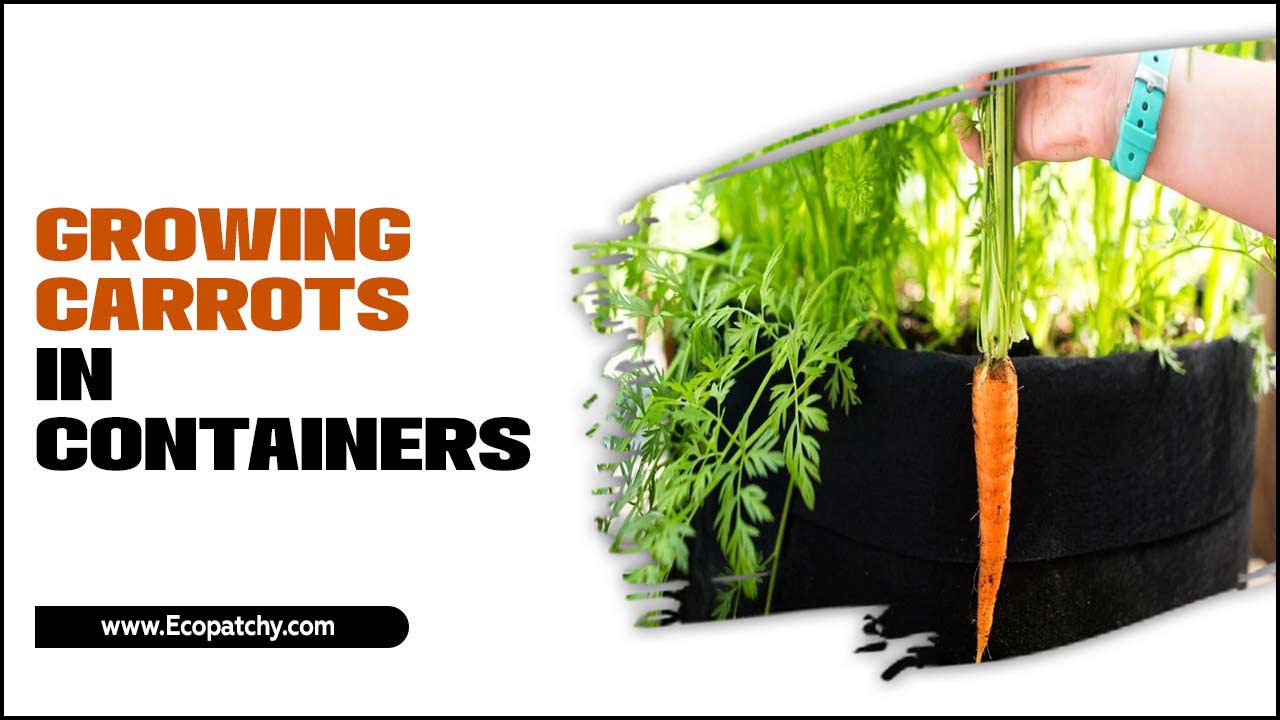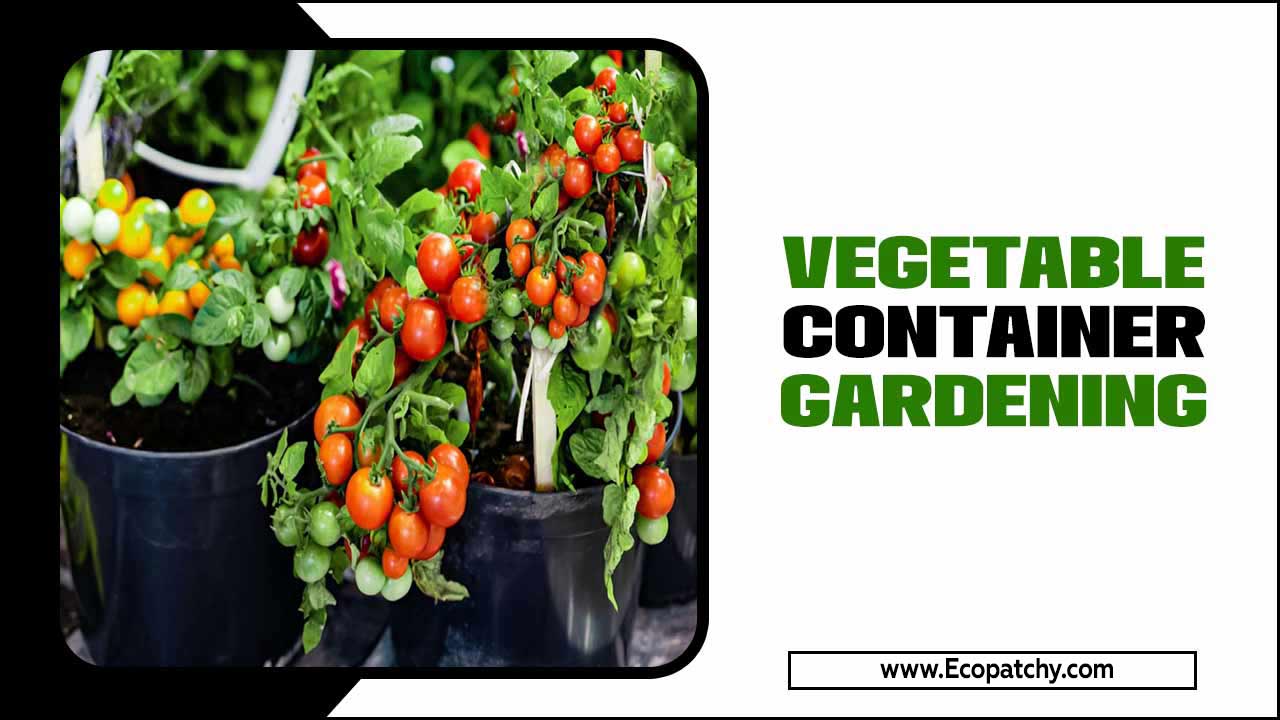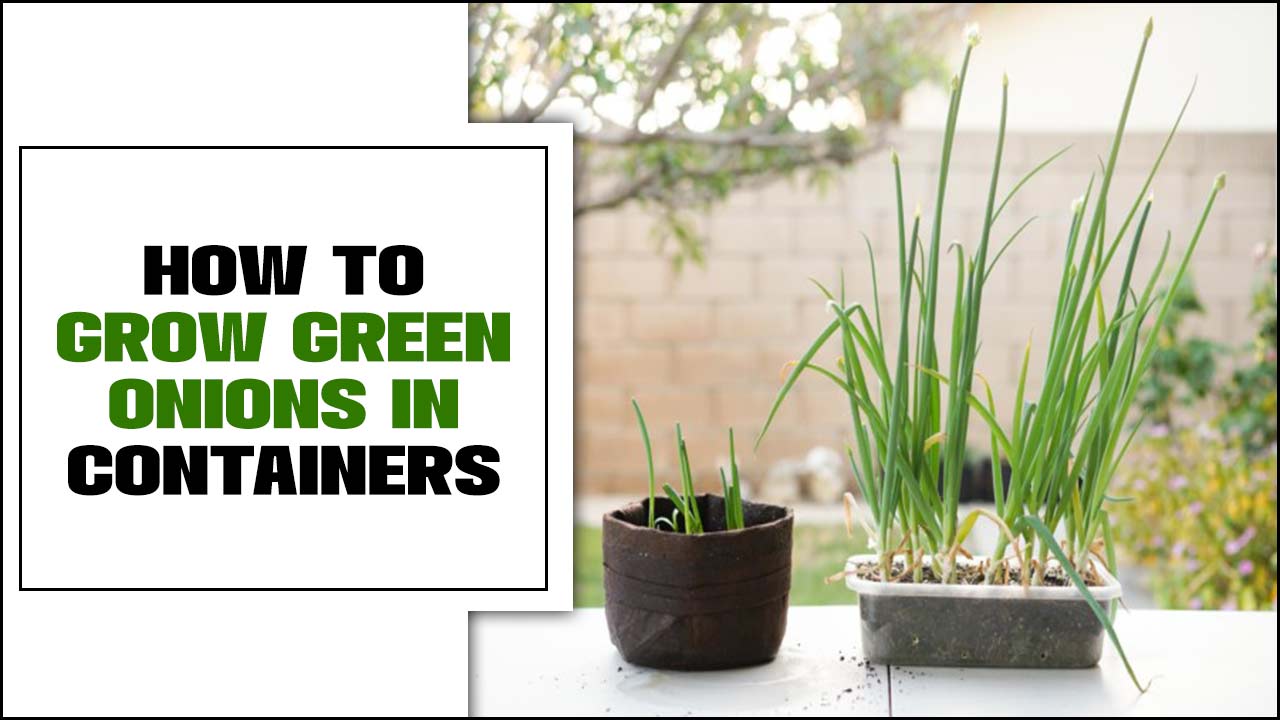Kale, also known as the “queen of greens,” has gained immense popularity in recent years due to its numerous health benefits and versatility in cooking.
As more people become conscious of their food choices, growing kale at home has become popular. However, not everyone can access a large backyard or garden space to grow this leafy green. Kale can easily be grown in containers, making it the perfect solution for those with limited space.
Here we’ll provide all the information you need to start growing kale in containers. From understanding the basics of container gardening to choosing the right container for your kale plants, we’ve got you covered. We’ll also provide tips on ensuring proper drainage, maintaining moisture levels in the soil, and fertilizing your plants appropriately.
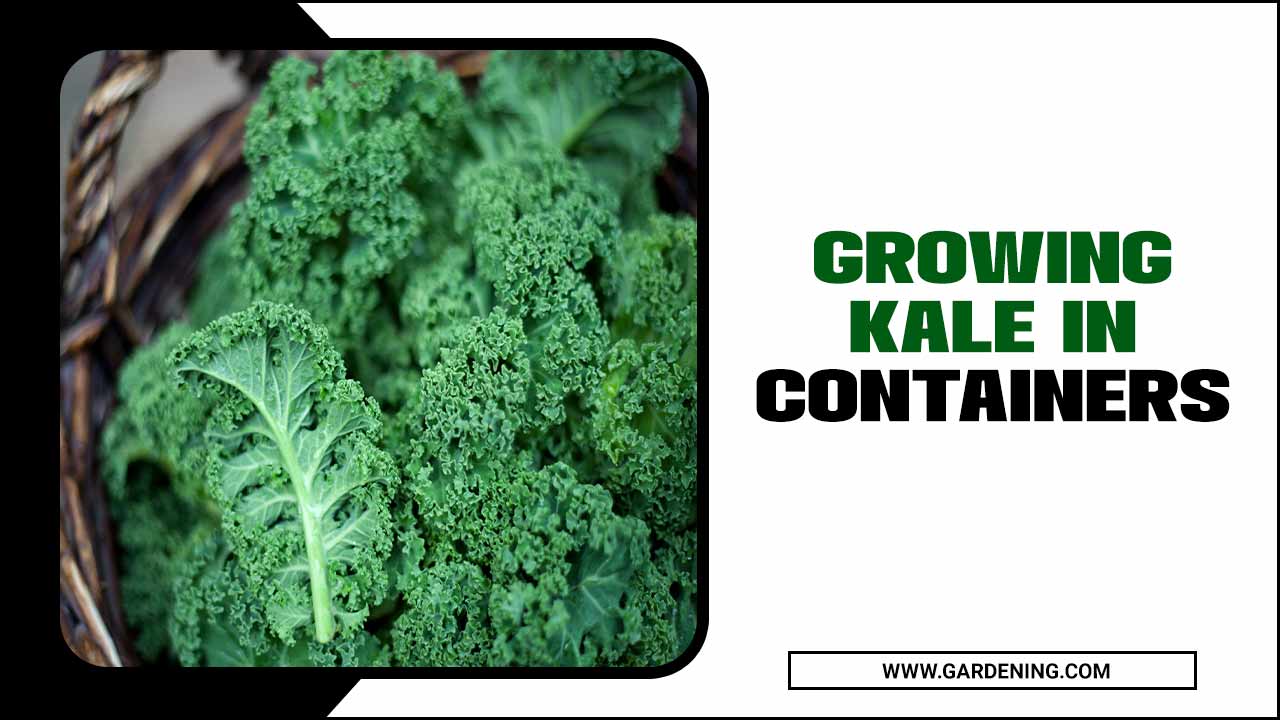
Why Is Organic Soil Crucial For Kale Growth?
Organic soil is crucial for growing kale in containers because it provides nutrients and conditions for healthy plant growth. Kale is a nutrient-dense vegetable that requires rich, well-draining soil to thrive.
Organic soil, free from synthetic chemicals and pesticides, promotes the growth of beneficial microorganisms that help break down organic matter and release nutrients for the plants. Additionally, organic soil retains moisture better than conventional soil, reducing the risk of overwatering or underwatering the kale plants.
7 Tips For Growing Kale In Containers
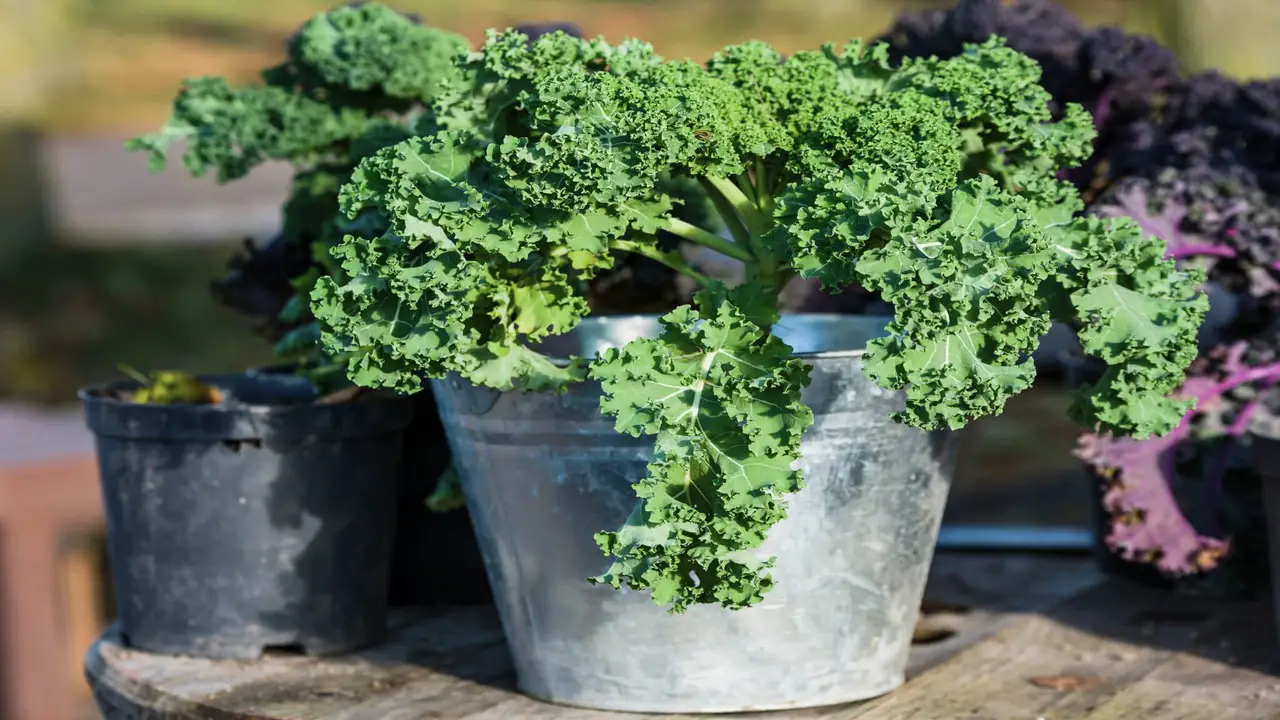
Kale is a leafy green vegetable from the Brassica family, including broccoli, cabbage, and Brussels sprouts. It is known for its dark green, curly leaves, and high nutritional value. Kale is packed with vitamins A, C, and K and minerals like calcium and iron.
It is also rich in antioxidants and fibre, making it a popular choice for those looking to incorporate more nutrient-dense foods into their diet. Growing kale in containers is a great option for those with limited space or who want to have fresh, homegrown kale right at their fingertips. Here are 7 tips to help you successfully grow kale in containers:
Choose The Right Size Container
When growing kale in containers, it is important to choose the right size container. A container at least 12 inches deep accommodates the kale’s root system. Consider the number of kale plants you want to grow and choose a container accordingly. Adequate space is crucial for the kale plants to grow and develop properly.
Ensure the container has enough room for the kale plants’ mature leaves to spread. It’s important to avoid overcrowding by choosing a container that provides sufficient space for each kale plant. By selecting the right size container, you can ensure that your kale plants have the space to thrive and produce abundant leafy greens.
Use Well-Draining Soil
To ensure optimal growth when growing kale in containers, it is essential to use well-draining soil. Start by selecting a potting mix specifically formulated for container gardening. This will provide the necessary nutrients and support for your kale plants.
Ensure the soil has good drainage to prevent waterlogging and root rot, which could harm the plants. You can improve the soil structure by incorporating organic matter such as compost or peat moss. Adding perlite or vermiculite to the potting mix can also enhance drainage. Remember to regularly monitor the soil moisture levels and adjust watering accordingly to maintain the ideal soil conditions for your kale.
Provide Adequate Sunlight
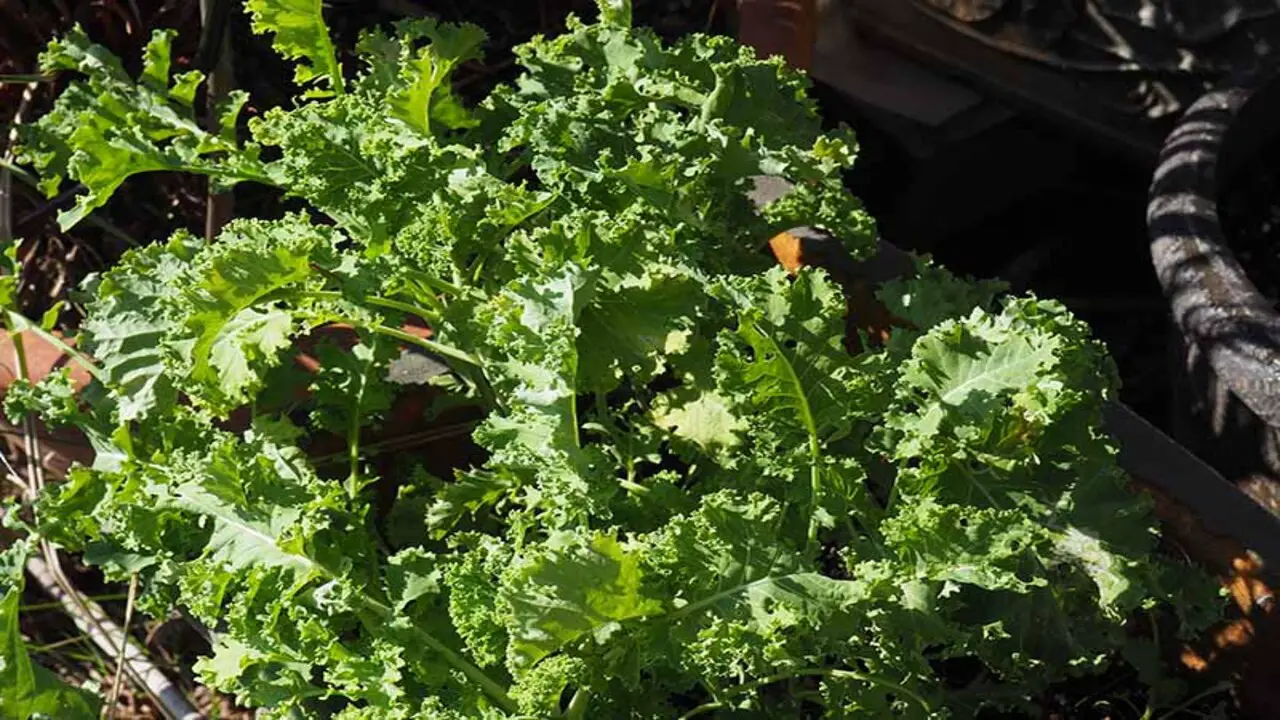
To ensure optimal growth, providing adequate sunlight for kale plants grown in containers is essential. Place the container in a location that receives at least 6 hours of direct sunlight daily. Morning sunlight is particularly beneficial as it is less intense than the afternoon sun. Reflective materials, such as aluminum foil, can maximize sunlight exposure for the kale plants.
To prevent uneven growth, rotate the container periodically to ensure all sides of the kale plants receive equal sunlight. Regular monitoring is necessary to detect signs of sunburn or light stress, allowing for timely adjustments in placement.
Water Regularly
To ensure the healthy growth of your kale plants in containers, it is important to water them regularly and maintain consistent soil moisture levels. Monitor the soil moisture and water when the top inch feels dry. Use a watering can or a gentle spray nozzle to avoid disturbing the delicate roots of the kale plants.
Water slowly and evenly to ensure the water reaches the root ball. It is crucial to avoid overwatering, so allow excess water to drain out of the container. Following these watering practices can provide your kale plants with the right amount of hydration for optimal growth and development.
Fertilize Appropriately
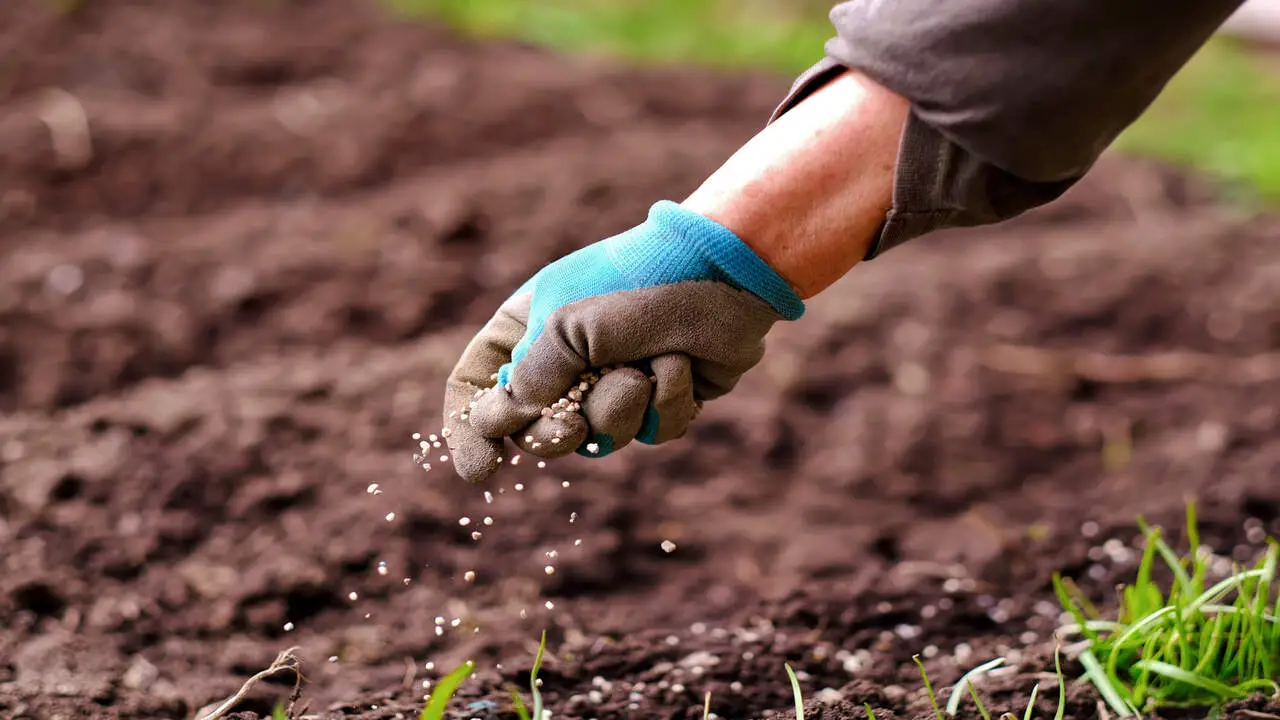
Feeding your kale regularly is important to ensure optimal growth and nutrient absorption. Organic fertilizers are great for growing kale in containers, as they avoid harmful chemicals. Maintaining a balance of nitrogen, phosphorus, and potassium is crucial for the health of your kale plants.
When applying fertilizer, follow the instructions on the packaging to prevent overfeeding. You can also enrich the soil and nourish your kale using compost or other natural methods. Take care to fertilize appropriately for healthy and thriving container-grown kale plants.
Thin-Out Seedlings
To ensure adequate spacing and airflow, it is important to remove excess kale seedlings. By thinning the seedlings, you prevent overcrowding and competition for nutrients among the plants. Each kale plant needs enough space to grow and develop mature leaves, so removing weak or stunted seedlings allows stronger ones to thrive.
Regularly monitoring and selectively thinning out seedlings throughout the growing season helps maintain a healthy kale crop. By following this step, your container garden of leafy greens will have the optimal conditions for growth. Remember to continue monitoring the seedlings to ensure a continuous harvest of your kale.
Harvest Leaves Regularly
To ensure a continuous supply of fresh greens, it is important to harvest kale leaves regularly. Start by harvesting the outer leaves once they reach maturity. Cut the leaves just above the stem to encourage new growth.
When it comes to harvesting, younger and tender leaves are perfect for salads, while mature leaves are great for cooking. Regularly harvesting kale prevents it from becoming too mature and tough. By keeping up with the regular harvest, you can enjoy a steady supply of delicious and nutritious kale from your container garden. Harvesting regularly is essential for maintaining a healthy and productive kale plant.
Choosing The Right Container For Kale
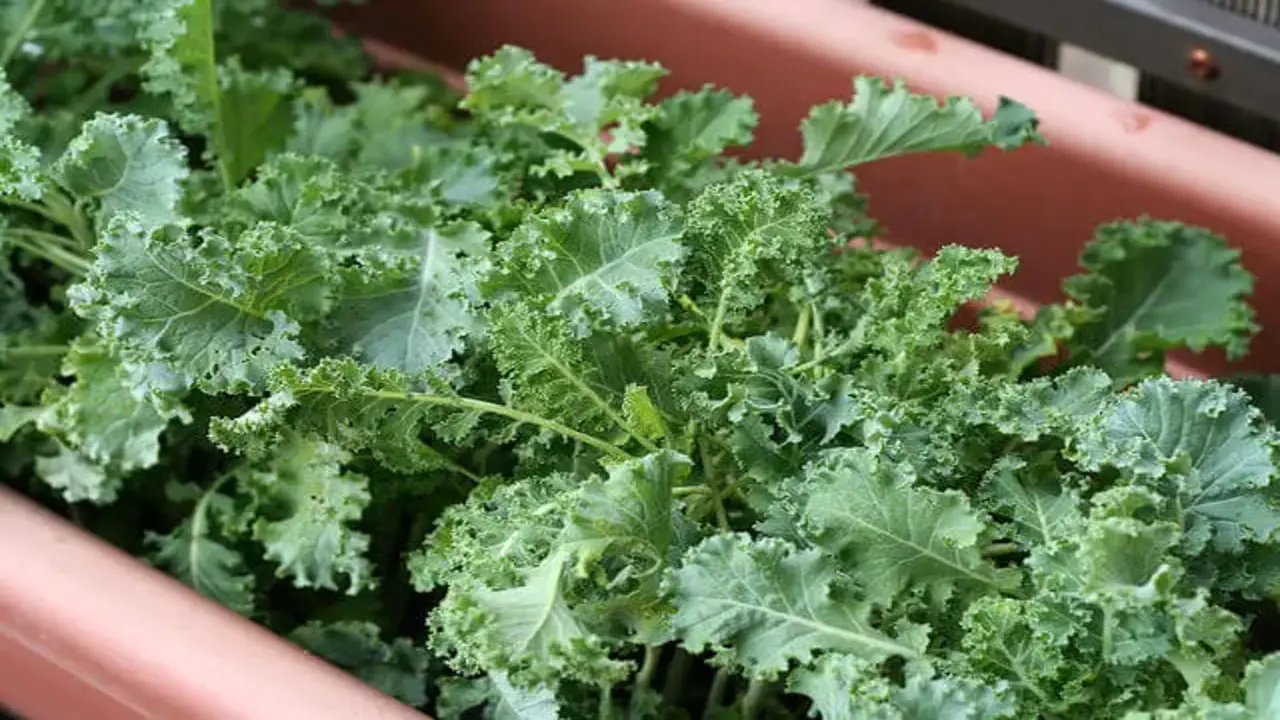
When growing kale in containers, choosing the right container is key to ensuring healthy growth and a successful harvest. By keeping these tips in mind when selecting your container, you’ll set your kale plants up for success and enjoy fresh, homegrown greens in no time. Here are some tips for selecting the perfect container for your kale plants:
- Size Matters: Kale plants have deep roots, so opt for a container 12 inches deep to allow for ample root growth.
- Consider Width: Kale plants can spread out quite a bit, so choose a container with a diameter of at least 18 inches to provide enough space for the leaves to grow.
- Drainage Is Essential: Ensure the container has drainage holes at the bottom to prevent waterlogged soil, which can lead to root rot. If the container doesn’t have holes, drill some yourself or use a layer of gravel at the bottom for improved drainage.
- Material Options: Containers made of plastic, ceramic, or fabric are all suitable for growing kale. Plastic containers are lightweight and retain moisture well, while ceramic containers provide good insulation. Fabric pots offer excellent drainage and air circulation.
- Consider Mobility: If you plan on moving your kale containers around frequently, opt for lightweight materials or invest in containers with built-in wheels or handles for easy maneuverability.
Benefits Of Growing Kale In Containers
Growing kale in-containers can be a convenient and rewarding way to enjoy this nutritious leafy green. When growing kale in-containers, make sure to choose a container that is at least 12 inches deep and has good drainage. Fill it with a well-draining potting mix enriched with compost. Place your containers in a sunny location and water regularly to keep the soil moist but not waterlogged. There are several benefits to growing kale-in containers, including:
- Space-Saving: Containers allow you to grow kale even with limited yard space. They can be placed on balconies, patios, or even indoors.
- Easy Maintenance: Containers make it easier to control the soil quality and moisture levels, which are important for healthy kale growth. They also make it easier to protect your plants from pests and diseases.
- Extended Growing Season: With containers, you have more control over the growing environment. This means you can extend the growing season for kale by moving the containers indoors or providing protection during colder months.
How To Ensure Proper Drainage For Kale Plants
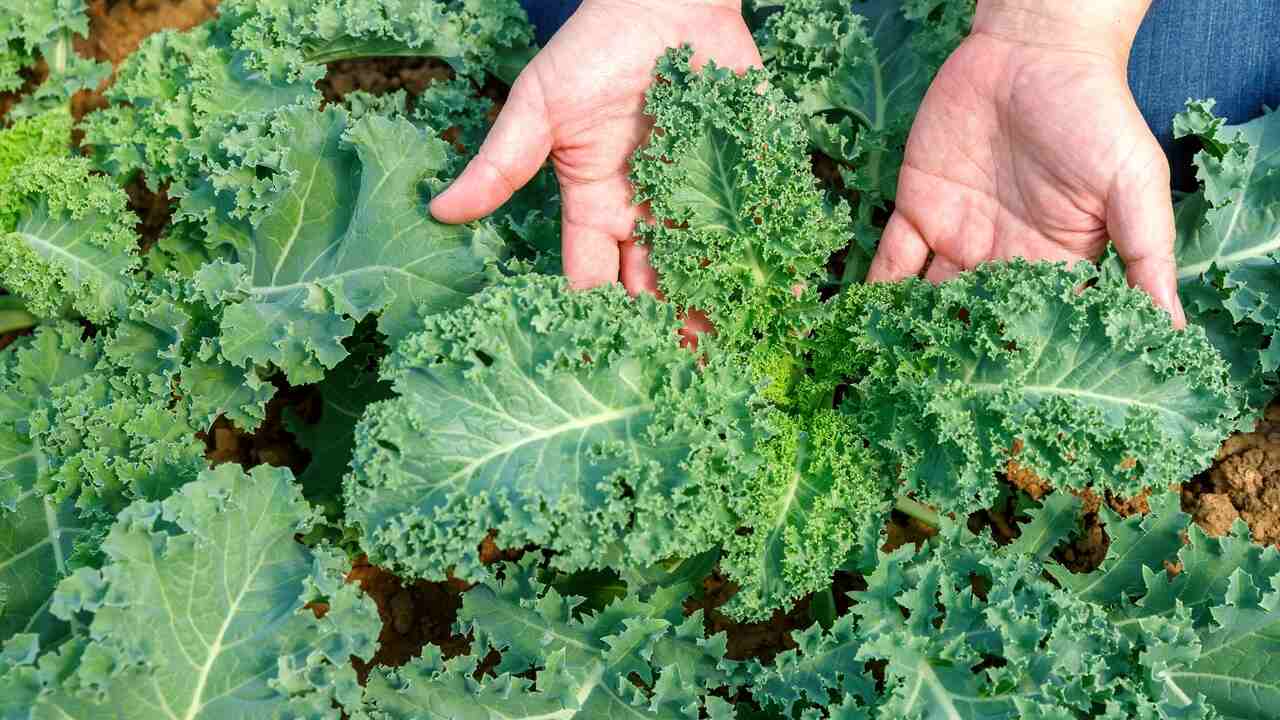
Proper drainage is essential for growing kale in containers. Kale plants require well-draining soil to prevent soggy roots, which can lead to root rot and other diseases. Ensuring proper drainage can create an optimal growing environment for your kale plants in containers, promoting healthy growth and productivity. To ensure proper drainage, follow these tips:
- Choose A Container With Drainage Holes: Select a container with multiple drainage holes at the bottom to allow excess water to escape.
- Use A Well-Draining Potting Mix: Use a high-quality potting mix specifically formulated for containers to provide good drainage while retaining enough moisture for the plants.
- Add Gravel Or Pebbles To The Bottom Of The Container: Place a layer of gravel or pebbles at the bottom before adding the potting mix. This will create a space for excess water to collect and prevent it from saturating the roots.
- Avoid Overwatering: Water your kale plants only when the top inch of soil feels dry. Overwatering can lead to poor drainage and root problems.
How Much Sunlight Do Kale Plants Need?

Kale plants thrive in cool weather and require at least 6 hours of direct sunlight daily. To grow kale successfully in containers, placing them where they will receive adequate sunlight is important. If you have limited space or your balcony or patio does not receive direct sunlight for the required time, consider using a grow light to supplement the natural light. This will help ensure your kale plants receive sunlight to grow and thrive.
How Often Should You Fertilize Your Kale Plants?
Fertilizing your kale plants is important in ensuring healthy growth and a bountiful harvest. Generally, kale plants should be fertilized every 4-6 weeks during the growing season. However, it is important to monitor your plants’ health and adjust the fertilization frequency as needed.
If your kale plants show signs of nutrient deficiency, such as yellowing leaves or stunted growth, you may need to increase the frequency of fertilization. On the other hand, if your plants are growing vigorously and have dark green leaves, you may not need to fertilize as often. Choosing a balanced fertilizer that provides essential nutrients like nitrogen, phosphorus, and potassium is also important.
Troubleshooting Common Issues In Container Gardening With Kale
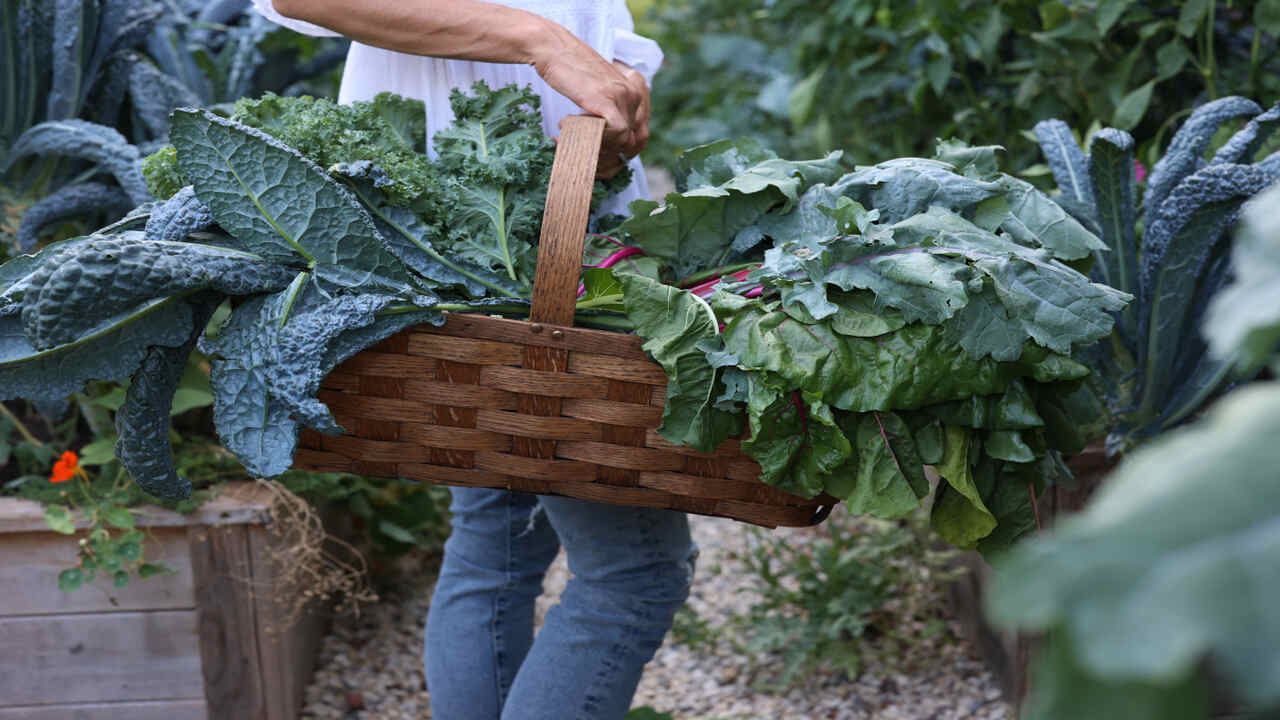
Container gardening with kale can be a rewarding and convenient way to grow this nutritious leafy green. However, like any type of gardening, it has its challenges. By being aware of these common issues and taking proactive measures to address them, you can enjoy a successful container garden filled with healthy.
Here are some common issues that you may encounter when growing kale in containers and some troubleshooting tips to help you overcome them:
- Pests: Kale is susceptible to aphids, caterpillars, and flea beetles. To prevent infestations, regularly inspect your plants for signs of damage or the presence of insects. If you notice any pests, try using natural remedies like neem oil or introducing beneficial insects like ladybugs to help control the population.
- Disease: Kale can be affected by powdery and downy mildew. To prevent these diseases, ensure proper air circulation around your plants by spacing them adequately and avoiding overcrowding. Additionally, avoid overhead watering and water at the base of the plant to reduce moisture on the leaves.
- Nutrient Deficiencies: Kale requires adequate nutrients to thrive. It may indicate a nutrient deficiency if you notice yellowing leaves or stunted growth. Consider using a balanced organic fertilizer or supplementing with compost to provide your plants with the necessary nutrients.
- Overwatering Or Underwatering: Finding the right watering balance can be challenging in container gardening. Overwatering can lead to root rot, while underwatering can cause wilting and poor growth. It’s important to monitor the moisture levels in your containers and adjust your watering accordingly. Stick your finger about an inch into the soil – if it feels dry, it’s time to water.
Conclusion
To successfully grow kale in containers, it is essential to understand the basics and provide the right conditions. Use organic soil for optimal growth. Follow these tips: choose the right size container, ensure well-draining soil, provide adequate sunlight, and water regularly, fertilize appropriately, thin out seedlings, and harvest leaves regularly.
Growing kale-in containers offers several benefits, including easier access, better pest control, and flexibility in positioning. Proper drainage is crucial for the health of your kale plants, so ensure that the containers have drainage holes.
Follow the planting and care instructions for kale seeds, provide sufficient sunlight, and maintain moisture levels in the soil. Fertilize your kale plants as needed and troubleshoot common issues. With these tips, you’ll succeed in growing kale in containers and enjoy a fresh and nutritious harvest.
Frequently Asked Questions
1.Does Kale Grow Well In Containers?
Ans: Kale thrives in containers, making it an excellent choice for container gardening. With proper care, container-grown kale can yield a steady supply of fresh leaves year-round. Ensure the container is 12 inches deep and provides ample sunlight, water, and nutrients for healthy growth.
2.What Is The Best Container To Grow Kale In?
Ans: When it comes to growing kale in containers, choosing the right container for optimal growth is important. A container with a depth of at least 12 inches is recommended, and materials like ceramic, plastic, or wood are suitable options. Ensure the container has proper drainage holes to prevent waterlogging. Consider using self-watering containers or fabric grow bags for even better results.
3.How Many Kale Plants Are In A 5-Gallon Bucket?
Ans: Generally, a 5-gallon bucket can accommodate one kale plant. However, if the plants are small and the bucket is deep enough, you can grow up to two plants. Ensure enough space for root growth and use high-quality potting soil. Water and fertilize regularly for optimal growth.
4.Are You Ready To Start Planting Kale Seeds In Your Containers?
Ans: Ready to begin your journey of growing kale in containers? Before you start, consider the weather conditions and choose the right time. Ensure your container has good drainage and enough space for growth. Use quality soil and fertilizers for healthy plants. Plant seeds at the recommended depth and spacing.
5.Is It Possible To Grow Kale In Containers?
Ans: Yes, you can grow kale in containers. Container size should be at least 12 inches deep. Use a well-draining and nutrient-rich potting mix. Ensure regular watering and fertilization for optimal growth.

